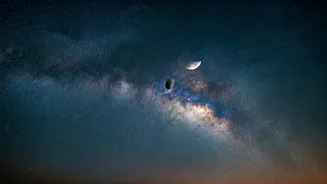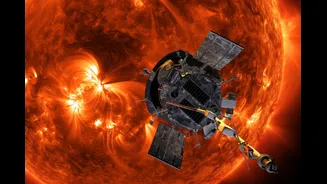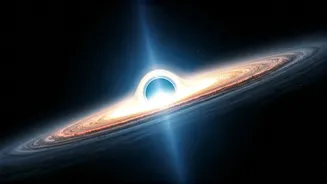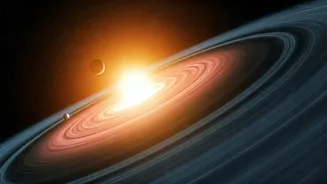Moon's Rendezvous With Planets
The moon frequently interacts with the planets, offering delightful sights for stargazers. On August 20th, the moon and Jupiter were expected to grace
the predawn sky, providing an opportunity for early risers to witness this conjunction. In September, specifically on the 16th, the moon was to join the Gemini twins alongside Jupiter in the early morning sky. Later, on October 5th, the moon was predicted to be in close proximity with Saturn, creating another appealing sight. Additionally, skywatchers were encouraged to look for the moon and Jupiter to get close to each other over the weekend, adding to the list of celestial events.
Venus, Mercury, and More
Venus, Mercury, and Jupiter have also been set to put on a show for viewers. On September 1st, before sunrise, stargazers could have witnessed Venus aligning with Jupiter and Mercury, forming a planetary alignment. Later in October, on the 19th, the moon and Venus were to engage in a morning stroll across the sky, another opportunity to observe these celestial bodies. The positioning of planets like Venus and Jupiter offers some remarkable and easily observable opportunities for people to engage with the night sky, enhancing viewing pleasure and prompting curiosity about the universe.
Moon and Star Clusters
The moon's journey across the night sky includes encounters with notable star clusters. On September 12th, the moon was slated to shine near the Pleiades star cluster, a chance to appreciate this cluster's beauty. In November, specifically on the 6th, the moon was anticipated to meet up with the Seven Sisters of the Pleiades, further enriching the visual experience. These alignments offer stunning visual contrasts, with the moon's light juxtaposing against the backdrop of the star clusters. This makes them a highlight of the celestial calendar.
Notable Celestial Events
Beyond planetary interactions and star cluster meetings, other events were also scheduled. In October, specifically on the 12th, the moon was to be visible alongside Orion in the half-lit phase. The 'Beaver Moon,' a supermoon, was to appear in November, promising a grand spectacle in 2025. These events underscore the dynamic nature of the night sky, offering variety and something for everyone. From a visual perspective, the array of activities provides frequent chances for skywatchers to witness something out of the ordinary, and from a scientific perspective, they remind us how dynamic and ever-changing our universe is.











